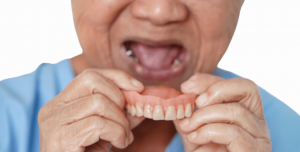Brushing and flossing are both important for your oral health. Brushing only removes plaque from the front and back surfaces of your teeth, while flossing allows you to remove the plaque between your teeth and underneath your gums. The most destructive microbes live in these hard-to-reach spots.
Here are some favorite flossing facts:
- Flossing removes food debris and plaque wedged in the hard-to-reach areas between the teeth. This plaque build-up can lead to cavities, gingivitis and causes bad breath.
- Irregular flossing can lead to bleeding and sensitive gums. If you floss consistently, the bleeding will eventually subside. Healthy gums are not supposed to bleed.
- Brushing only cleans around 60% of the surface areas of teeth, leaving the spaces between teeth uncleaned. Not flossing means that 40% of surface areas are left untouched. Flossing helps to scrub the remaining spots and gets teeth 100% clean!
- The two main types of floss are monofilament and multifilament floss. Monofilament floss is made of plastics and rubber, while multifilament is mainly composed of nylon and silk.
- People with orthodontic devices, like braces, can floss too! Floss threaders and interdental brushes help people with braces to remove food debris from between their teeth.
- It is also easier to slide waxed floss between closely spaced teeth.
Marieke Weber, Oral Hygienist, Intercare Glenfair












